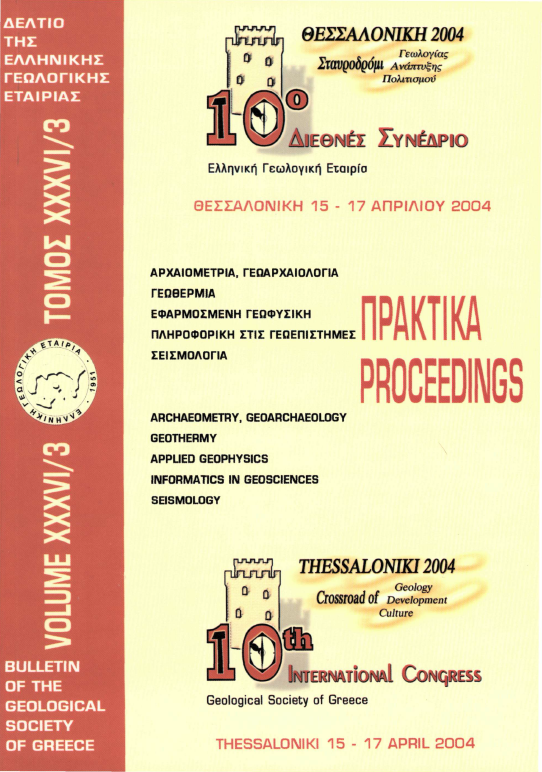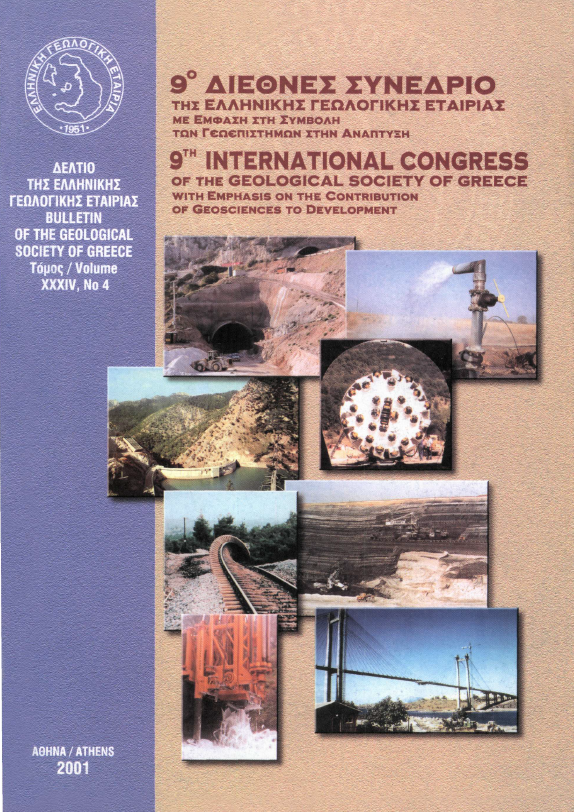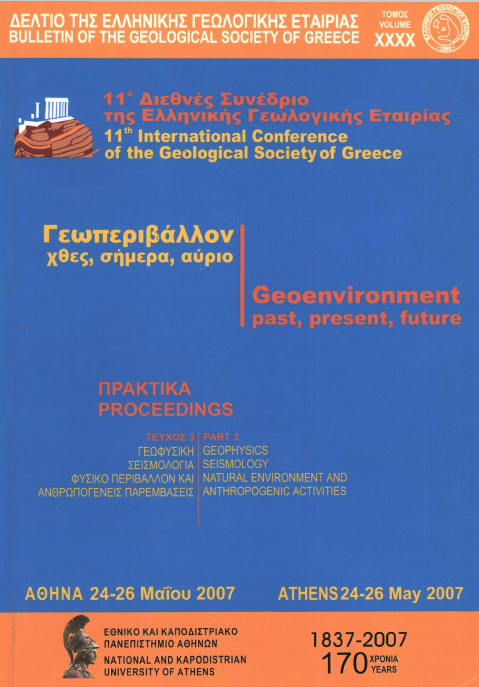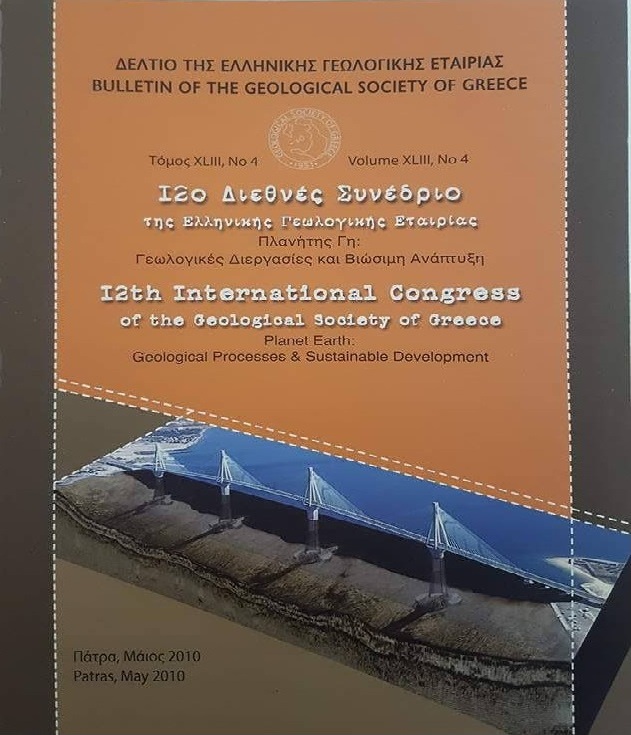INVERSION OF ELECTRICAL RESISTIVITY TOMOGRAPHY DATA DERIVING FROM 3D STRUCTURES
Περίληψη
In this work the effectiveness of 2D and 3D algorithms for inverting Electrical Resistivity Tomography (ERT) data deriving from 3D structures is studied. Further, an analysis of data-collection strategies in the case of 3D structures is being carried out. Dense 2D measurements are nconsidered a practical tool for mapping 3D structures given the current limitations in ERT hardware. To perform the tests 2D and a 3D inversion programs are used. Both schemes use a forward model based on a 2.5D and 3D finite element scheme respectively. For both the 2D and 3D cases a fully non-linear inversion scheme based on a smoothness constrained algorithm is used. The Jacobian matrix is calculated using the adjoined equation technique. Comparisons are being carried out by means of synthetic examples for 3D models and dense 2D measurements with their axis parallel to the X (X-lines) and/or Y (Y lines) directions. For the case of 3D structures and 2D inversion tests results illustrate that both X-line, Y-line measurements are required to delineate the modeling body. However, when 3D inversion is considered either Xline or Y-line measurements are adequate to produce good quality reconstructions of the subsurface. Overall, results clearly illustrate the superiority of 3D over 2D inversion schemes in the case of 3D structures both in view of quality and logistics. Despite the increased computational time required by 3D inversion schemes, good quality results can be produced. Further, 2D inversion techniques require effectively a double amount of measurements to produce acceptable results. The ongoing advancement of fast computers renders the described approach of combining dense 2-D measurement with 3D inversion practical for routine data treatment.
Λεπτομέρειες άρθρου
- Πώς να δημιουργήσετε Αναφορές
-
Tsourlos, P. (2004). INVERSION OF ELECTRICAL RESISTIVITY TOMOGRAPHY DATA DERIVING FROM 3D STRUCTURES. Δελτίο της Ελληνικής Γεωλογικής Εταιρείας, 36(3), 1289–1297. https://doi.org/10.12681/bgsg.16472
- Ενότητα
- Γεωφυσική

Αυτή η εργασία είναι αδειοδοτημένη υπό το CC Αναφορά Δημιουργού – Μη Εμπορική Χρήση 4.0.
Οι συγγραφείς θα πρέπει να είναι σύμφωνοι με τα παρακάτω: Οι συγγραφείς των άρθρων που δημοσιεύονται στο περιοδικό διατηρούν τα δικαιώματα πνευματικής ιδιοκτησίας επί των άρθρων τους, δίνοντας στο περιοδικό το δικαίωμα της πρώτης δημοσίευσης. Άρθρα που δημοσιεύονται στο περιοδικό διατίθενται με άδεια Creative Commons 4.0 Non Commercial και σύμφωνα με την οποία μπορούν να χρησιμοποιούνται ελεύθερα, με αναφορά στο/στη συγγραφέα και στην πρώτη δημοσίευση για μη κερδοσκοπικούς σκοπούς. Οι συγγραφείς μπορούν να: Μοιραστούν — αντιγράψουν και αναδιανέμουν το υλικό με κάθε μέσο και τρόπο, Προσαρμόσουν — αναμείξουν, τροποποιήσουν και δημιουργήσουν πάνω στο υλικό.










